



Key Takeaways
- Seamless Setup: Easily sign up, download Zoom, and navigate its user-friendly interface to start teaching online.
- Engage and Interact: Use features like screen sharing, breakout rooms, and interactive tools to foster an engaging learning environment.
- Secure Your Classroom: Protect your Zoom sessions with waiting rooms, passcodes, and customized sharing permissions.
Introduction
In today's rapidly evolving digital age, where technology has permeated every facet of our lives, the landscape of education is undergoing a profound transformation. As traditional classrooms extend their boundaries into the virtual realm, online teaching has transcended being a mere alternative and has become an imperative component of modern pedagogy. Within this paradigm shift, Zoom, an exceptionally versatile and feature-rich video conferencing platform, has emerged as a veritable linchpin for educators to seamlessly conduct virtual classes. In this comprehensive guide, we will not only scratch the surface but embark on an expedition into the very heart of harnessing how to set up and use Zoom for classes.
Getting Started with Zoom
In this section, we'll navigate the intricate process of getting started with Zoom online class, ensuring that educators are equipped with the essential know-how to seamlessly set up their online classes.
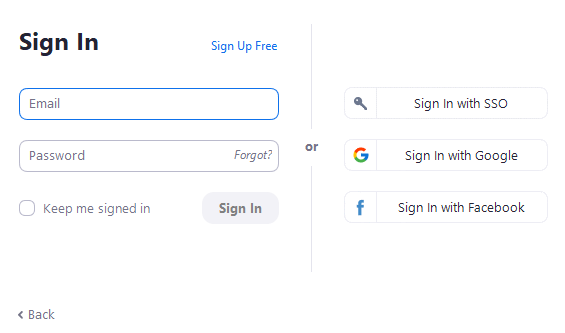
1. Sign-up and Account Creation Process
The odyssey into the world of Zoom commences with a seamless sign-up and account creation process that facilitates educators' transition into the virtual realm.
a. Visit the Zoom Website: Begin by visiting the official Zoom website. Here, you'll encounter a user-friendly interface that provides a clear avenue for account creation.
b. Select Your Plan: Zoom offers a range of plans tailored to various needs. Opt for the plan that aligns with your educational requirements. The free Basic plan provides a comprehensive array of features suitable for most educators.
c. Enter Your Details: Fill in your essential details, such as your email address and password. Ensure that the provided information is accurate, as this will be the cornerstone of your Zoom identity.
d. Verification and Confirmation: Upon entering your details, Zoom will send a verification link to your provided email address. Click on this link to verify your account and finalize the registration process.
2. Downloading and Installing the Zoom Application
With your Zoom account primed for action, the next step entails downloading and installing the Zoom application, granting you access to the platform's suite of features.
a. Access the Download Section: Navigate to the Zoom website's download section. Here, you'll find versions of the Zoom application for various platforms, including Windows, macOS, iOS, and Android.
b. Select Your Platform: Choose the version compatible with your device's operating system. Click on the download link to initiate the process.
c. Installation Wizard: Once the download is complete, open the installation file. Follow the prompts provided by the installation wizard to seamlessly install the Zoom application on your device.
3. Navigating the Zoom Interface
With Zoom securely installed, the threshold of its interface awaits your exploration. Familiarizing yourself with the interface is pivotal to ensuring a seamless online teaching experience.
a. Login to Your Account: Launch the Zoom application and log in using the credentials you created during the account registration process.
b. Home Screen Overview: The home screen serves as your control center, providing quick access to scheduled meetings, settings, and various options.
c. Navigating the Menu: Explore the menu options to acquaint yourself with features such as scheduling meetings, joining sessions, and accessing your personal meeting room.
d. Customizing Settings: Delve into the settings to customize your preferences, including video and audio settings, virtual background options, and security configurations.
e. Joining and Conducting Meetings: Practice joining a meeting to understand the participant's perspective, and consider creating a mock session to familiarize yourself with hosting tools such as screen sharing, chat, and breakout rooms.
Setting Up Your Virtual Classroom
In this segment, we delve into the intricate art of setting up Zoom online classes.
1. Scheduling Classes and Sending Invitations
a. Access Your Zoom Dashboard: After logging into your Zoom account, navigate to your dashboard, where the tools of virtual instruction await your orchestration.
b. Schedule a New Meeting: Click on the "Schedule a Meeting" button, which opens a window prompting you to input meeting details.
c. Configure Meeting Details: Fill in essential information such as the meeting topic, date, time, and duration. A unique Meeting ID is automatically generated for each session.
d. Invite Participants: Under the "Invitees" section, input email addresses of participants you wish to invite. You can also copy the invitation link and share it through your preferred communication channels.
e. Advanced Options: Explore advanced settings to enable features such as waiting rooms for participant moderation and passcodes for enhanced security.

f. Schedule via EdisonOS: You can schedule a Zoom meeting via your EdisonOS course and choose recurring meetings when appropriate.
If you schedule from within EdisonOS:
- Course meetings appear to students within the EdisonOS course site.
- Course meeting also appear to class participants as events in the EdisonOS Calendar.
- Cloud recordings of meetings can be made available through the EdisonOS course site.
-
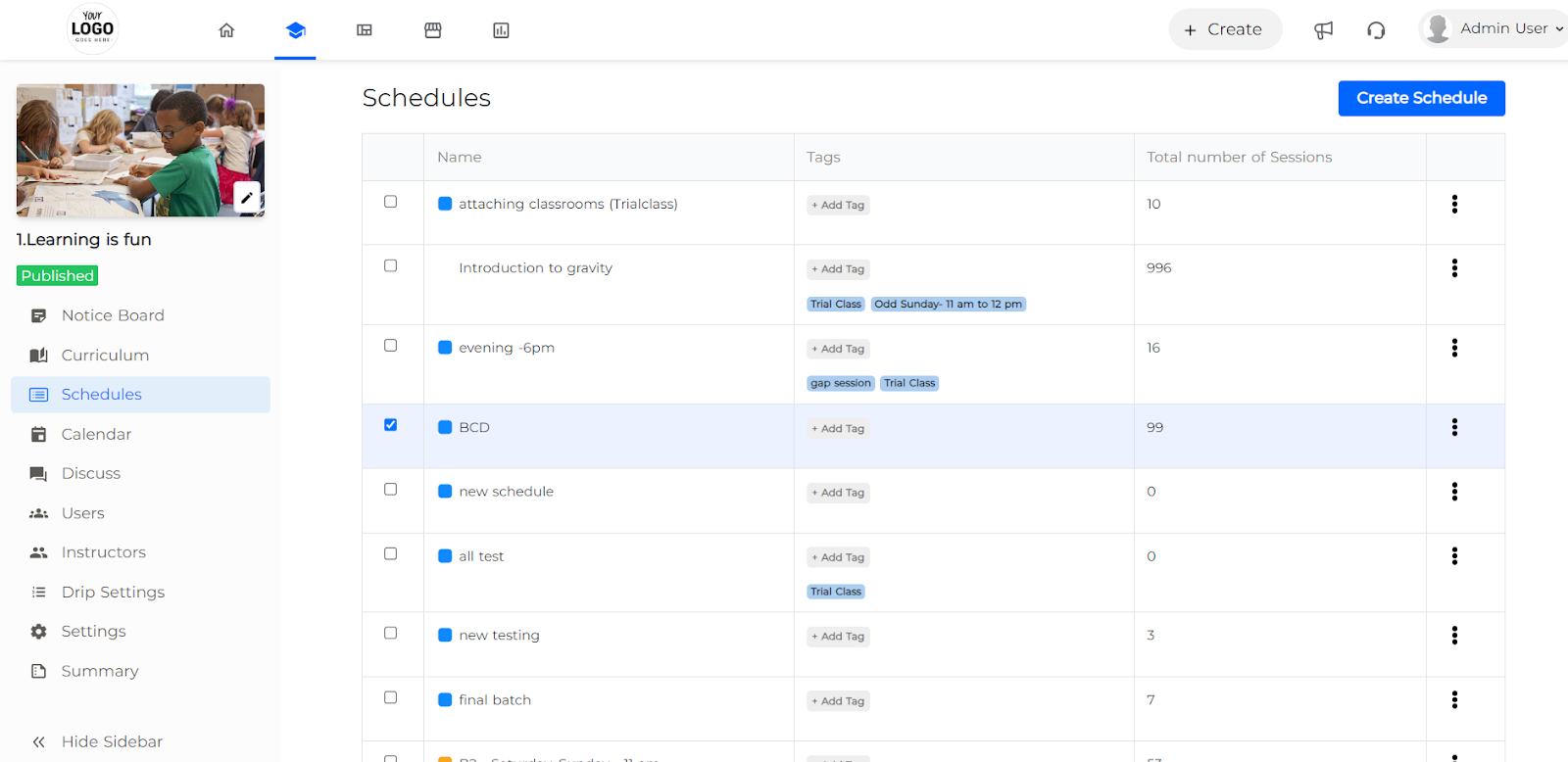
2. Configuring Audio and Video Settings for Optimal Quality
a. Audio Settings: Before the session, test your microphone to ensure clarity. Adjust settings to minimize background noise and echo. Encourage participants to use headsets for enhanced audio quality.
b. Video Settings: Test your webcam to ensure proper lighting and framing. Encourage participants to enable their cameras for a sense of presence and engagement.
c. Screen Sharing: Familiarize yourself with screen sharing options. Opt for "Optimize for Video Clip" when sharing videos to ensure smooth playback.
d. Virtual Backgrounds: For a professional touch, experiment with virtual backgrounds. Ensure that your surroundings have uniform lighting and contrast for optimal background replacement.
3. Utilizing Virtual Backgrounds to Create an Engaging Environment
a. Background Selection: Navigate to your video settings and select the "Virtual Background" tab. Choose from Zoom's default backgrounds or upload your own.
b. Backdrop Preparation: Select a background that resonates with the theme of your class. Avoid busy or distracting visuals that may divert attention from the learning experience.
c. Uniform Lighting: Ensure that your lighting is even and consistent, avoiding shadows that could disrupt the virtual background effect.

Best Practices for Online Teaching with Zoom
In this segment, we delve into a comprehensive array of best practices that empower educators to orchestrate impactful and enriching virtual learning experiences.
1. Create an Agenda
a. Structure and Sequence: Craft a clear and organized agenda for each session. Outline the topics to be covered, activities, breaks, and interactive elements.
b. Time Allocation: Allocate time slots for each agenda item. This ensures a balanced pace, preventing overexertion and facilitating ample time for engagement.
2. Dive into Specific Teaching Scenarios
a. Case Studies: Integrate real-life scenarios and case studies that resonate with learners. These scenarios provide context and demonstrate the practical application of concepts.
b. Problem-solving Exercises: Present learners with challenges and problem-solving exercises that prompt critical thinking and encourage collaborative solutions.
3. Plan Roles for Students: Don't Host Alone
a. Moderators: Assign participant moderators to assist in managing discussions, addressing technical issues, and facilitating engagement.
b. Timekeepers: Designate timekeepers who ensure that agenda items are covered within allocated time frames, promoting session efficiency.
4. Encourage a Sense of Community
a. Icebreakers: Initiate sessions with icebreaker activities to foster a sense of camaraderie among participants, transcending virtual barriers.
b. Group Introductions: Begin sessions by allowing participants to introduce themselves, sharing their backgrounds and aspirations, strengthening community bonds.
5. Record Your Session
a. Learning Archives: Record sessions to create a library of learning resources that participants can revisit for reinforcement and revision.
b. Absentees and Accessibility: Recordings accommodate learners who miss sessions and enhance accessibility for diverse schedules and time zones.

6. Prepare for Technical Issues
a. Backup Plans: Anticipate technical glitches by having backup plans for presentations, materials, and activities that don't rely solely on technology.
b. Contact Information: Share alternative contact information for technical support in case participants encounter connectivity or access issues.
7. Non-verbal and Verbal Feedback
a. Visual Cues: Embrace non-verbal cues like thumbs up, claps, and raised hands for instant feedback and engagement.
b. Verbal Encouragement: Provide positive reinforcement, acknowledging participants' contributions and efforts to create an inclusive environment.
8. Pre-record Video
a. Flipped Learning: Pre-record lectures or content to share before sessions, allowing more class time for discussions, interactions, and clarifications.
b. Engaging Content: Use pre-recorded videos to deliver complex content with visuals, animations, and demonstrations for enhanced understanding.
9. Host an Interactive Review Session
a. Summative Engagement: Host review sessions where participants consolidate their learning by revisiting key concepts, clarifying doubts, and asking questions.
b. Group Discussions: Encourage participants to discuss challenging topics, share insights, and collectively build a comprehensive understanding.
10. Use EdTech Platforms to Host Zoom Classes
a. EdisonOS: EdisonOS stands as a robust EdTech platform that seamlessly blends with Zoom to optimize virtual teaching and learning journeys.
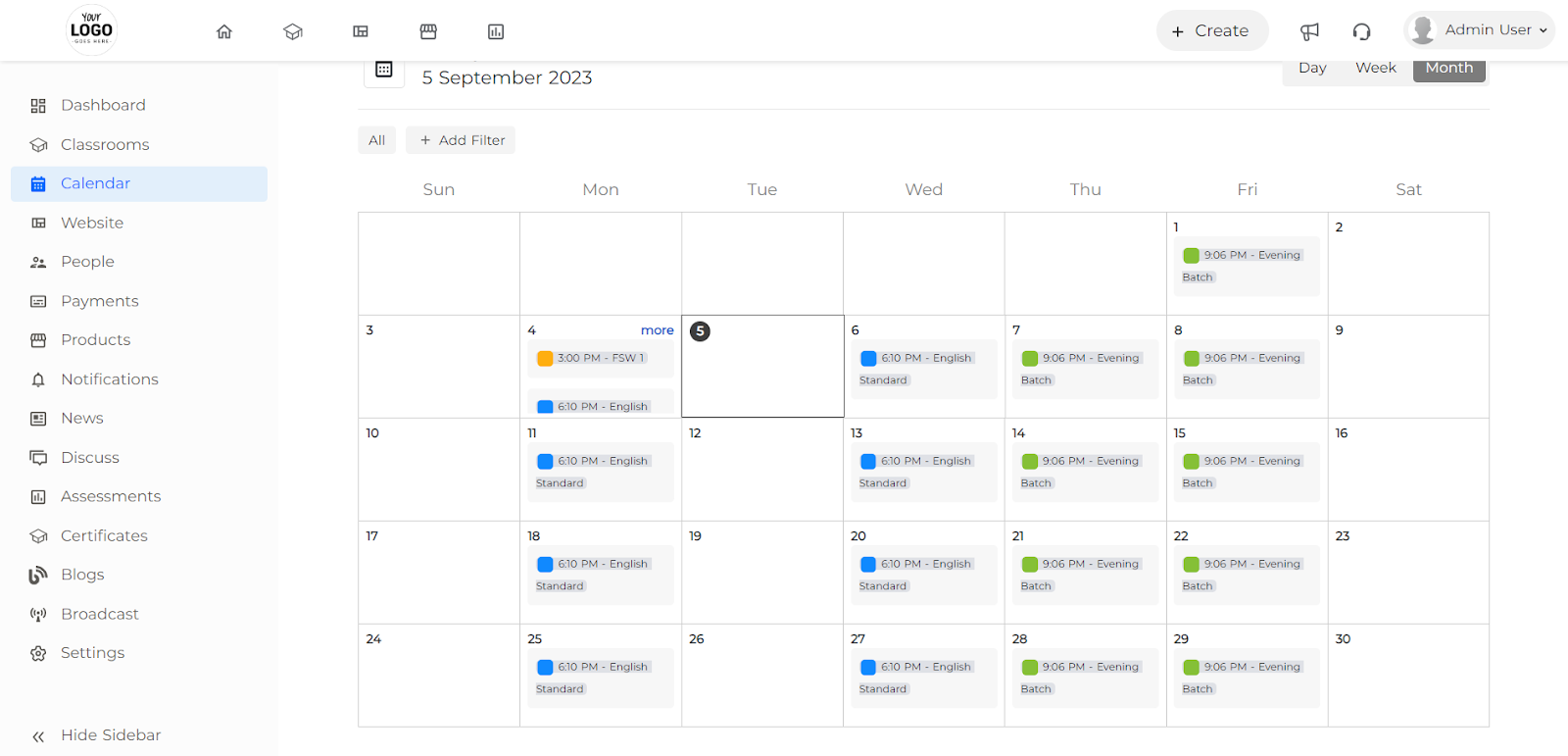
b. Podia: Podia, an innovative EdTech platform, collaborates harmoniously with Zoom to shape immersive online learning experiences.
c. Thinkific: Thinkific is an EdTech partner, supporting Zoom classes with an array of dynamic features.
Engaging Teaching Techniques
In this segment, we delve into employing engaging teaching techniques through Zoom, harnessing the power of presentations, annotation tools, and participant interaction to foster a vibrant and participatory Zoom classroom.
1. Sharing Presentations and Teaching Materials
a. Prepare Your Materials: Prior to the session, organize your teaching materials, including presentations, documents, and multimedia content. Ensure they are readily accessible on your device.
b. Screen Sharing: During the session, leverage the screen sharing feature to display your materials. Choose the "Optimize for Video Clip" option when sharing videos to ensure smooth playback.
c. Visual Clarity: Opt for a full-screen view while sharing to maximize the visibility of your materials. Clearly articulate key points, and encourage participants to take notes for active engagement.
d. Engage with Context: Pause periodically to elaborate on content, clarify doubts, and encourage questions. Use the shared materials as a visual aid to enhance understanding.
2. Using Annotation Tools for Interactive Learning
a. Annotation Accessibility: While sharing materials, access the annotation tools located in the Zoom toolbar. These tools allow you to draw, highlight, and emphasize specific elements on the shared screen.
b. Visual Enhancement: Utilize annotations to underline key points, circle important concepts, and highlight relevant information. This visual emphasis enhances comprehension and retention.
c. Interactive Exercises: Engage participants by involving them in interactive exercises. For example, ask them to annotate a diagram or label components during a science lesson.
d. Collaborative Markups: Encourage participants to utilize the annotation tools, promoting collaborative learning. This fosters a sense of involvement and ownership over the learning process.

3. Encouraging Student Participation Through Chat and Reactions
a. Activate Chat Function: Enable the chat function to facilitate text-based communication. Encourage participants to ask questions, share insights, and engage in discussions.
b. Structured Q&A: Pause periodically to address questions posed in the chat. This creates a dynamic dialogue that parallels traditional classroom interactions.
c. Reactions and Engagement: Leverage Zoom's reactions feature to enable participants to express agreement, confusion, or applause. This emotive element enhances the virtual classroom's atmosphere.
d. Icebreakers and Polls: Use the chat for icebreaker activities or conduct quick polls to gauge participant opinions. This fosters an environment of inclusivity and active involvement.

Interactive Features for Effective Teaching
In this segment, we embark on an exploration of Zoom's interactive features, unveiling the transformative potential of breakout rooms, polls and quizzes, and whiteboard collaboration for effective and engaging Zoom class.
1. Breakout Rooms for Group Activities and Discussions
a. Strategically Partitioning Participants: Breakout rooms enable educators to divide participants into smaller groups, mirroring the collaborative essence of physical group activities.
b. Seamless Facilitation: As an educator, you can guide discussions within specific breakout rooms, offering insights, clarifications, and encouraging meaningful interactions.
c. Enhancing Group Dynamics: Breakout rooms foster peer-to-peer engagement, enabling participants to engage in active discussions, brainstorming sessions, and problem-solving tasks.
d. Collaborative Outcomes: Participants reconvene after the breakout sessions to share insights, findings, and conclusions, enriching the collective learning experience.
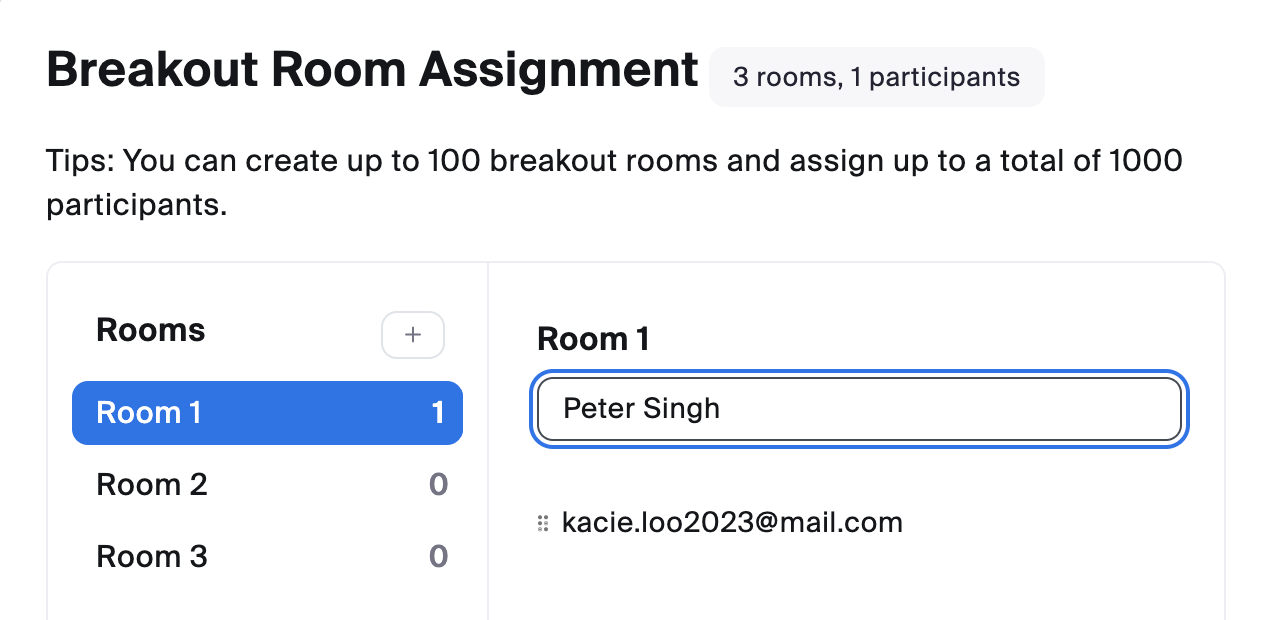
2. Polls and Quizzes to Gauge Student Understanding
a. Real-time Assessment: Utilize the poll feature to instantly gauge participant opinions, understanding, and preferences on a particular topic or question.
b. Formative Assessment: Incorporate quizzes into your session to assess comprehension. These can be knowledge checks, reflection exercises, or even open-ended discussions.
c. Stimulating Critical Thinking: Craft polls and quizzes that prompt participants to think critically and apply their understanding, fostering active engagement.
d. Immediate Feedback: Display poll results and quiz responses in real-time, allowing educators to address misconceptions, clarify doubts, and celebrate correct responses.
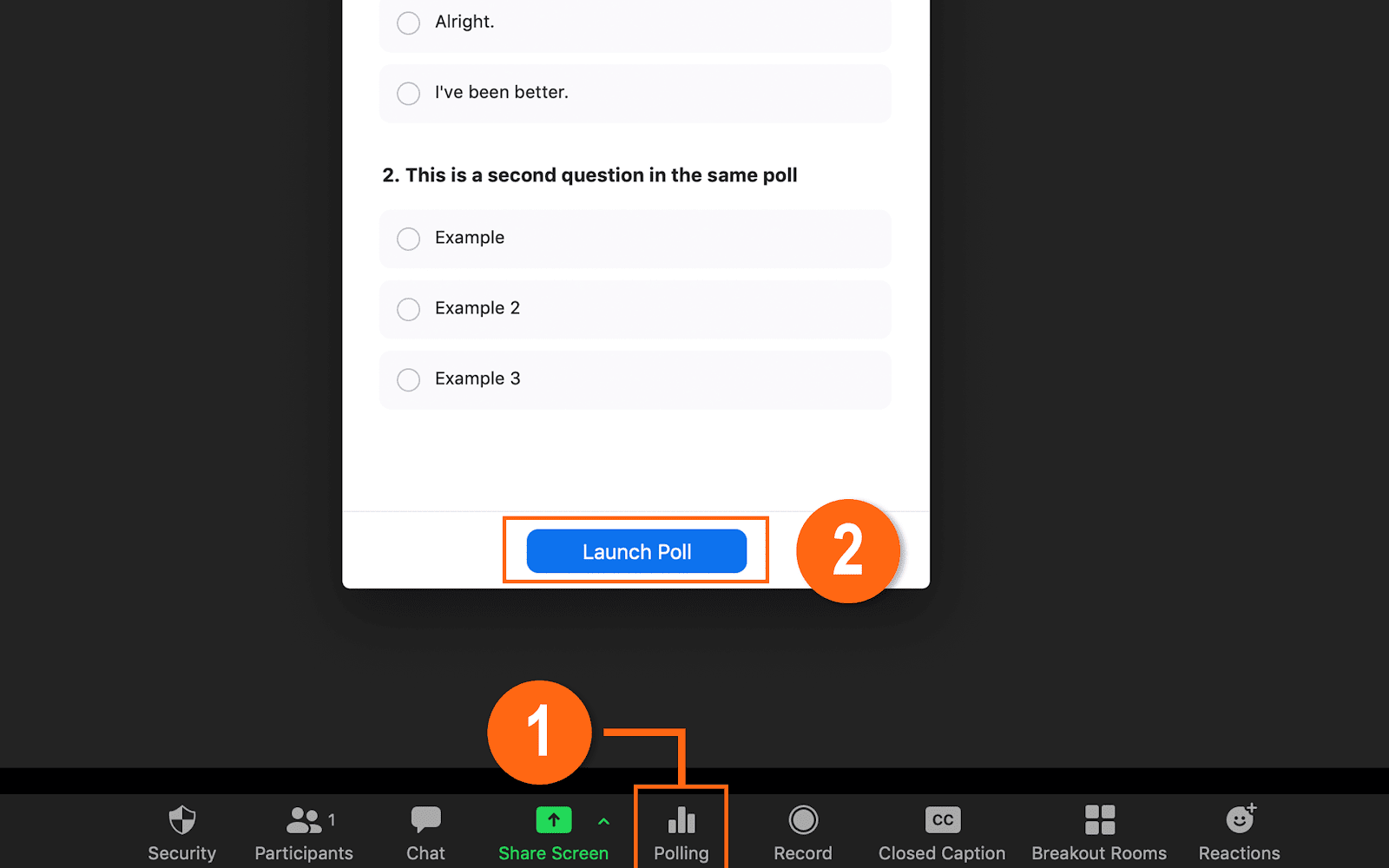
3. Whiteboard Collaboration for Visual Explanations
a. Dynamic Visual Aid: The virtual whiteboard transcends the limitations of physical boards, offering educators a canvas for dynamic visual explanations.
b. Illustrative Engagement: Use the whiteboard to sketch diagrams, jot down key points, and illustrate complex concepts, catering to diverse learning styles.
c. Participant Interaction: Encourage participants to contribute to the whiteboard, fostering a collaborative approach to visual learning and knowledge construction.
d. Problem-solving Scenarios: Create scenarios or equations on the whiteboard, encouraging participants to collectively solve problems, fostering an interactive learning experience.

Benefits of Using Zoom for Online Teaching
As educators navigate the virtual terrain, Zoom classrooms emerges as a dynamic ally, replete with features that redefine the boundaries of education. Here, we unveil the multifaceted advantages of embracing Zoom classes for virtual education, illuminating its role in fostering a seamless and enriching learning experience.
1. Real-Time Interaction
The essence of traditional classrooms lies in real-time interaction, a facet that Zoom masterfully replicates within its virtual confines. Through high-definition video and audio capabilities, educators can transcend physical limitations and engage learners in real-time discussions, presentations, and question-answer sessions. The magic of eye contact, facial expressions, and spontaneous interactions are not lost in the digital domain. Zoom's live interface allows participants to engage in a discourse, fostering a sense of connection and collaboration that mirrors the traditional classroom setting.
2. Dynamic Screen Sharing
The pedagogical potential of Zoom extends beyond mere video streaming. Screen sharing emerges as a transformative feature, enabling educators to display presentations, documents, and multimedia content directly from their devices. This dynamic tool paves the way for interactive learning, as educators can elucidate complex concepts, illustrate visual aids, and guide learners through a diverse array of materials. Learners, in turn, can reciprocate, sharing their screens for peer collaboration and feedback, thereby engendering a symbiotic learning environment.
3. Breakout Rooms for Collaborative Learning
The virtual realm need not be devoid of group interactions and collaborative activities. Zoom's breakout room usher in a new dimension of learning, permitting educators to partition participants into smaller groups for discussions, brainstorming, and problem-solving. This feature is a crucible for teamwork, where learners can engage in focused conversations, share insights, and collectively arrive at solutions. As an educator, you can traverse between breakout room, offering guidance, monitoring progress, and amplifying the richness of collaborative learning.
4. Seamless Recording for Future Reference
In the realm of online teaching, continuity is of paramount importance. Zoom's recording feature empowers educators to capture the entire virtual class, preserving every facet of the learning journey. These recordings serve as valuable resources for learners who can revisit sessions for revision, reinforcing concepts at their own pace. Furthermore, educators can curate libraries of recorded sessions, constituting a repository of knowledge that extends beyond the confines of time. Recording sessions also facilitate asynchronous learning, catering to diverse schedules and time zones.
5. Engaging Whiteboard Collaboration
Visual explanations have a profound impact on learning retention. Zoom's virtual whiteboard fosters the creation of dynamic visual aids that complement verbal explanations. Educators can illustrate concepts, draw diagrams, and solve problems in real-time, fostering engagement and understanding. Learners can actively participate, collaborating on the whiteboard, sharing ideas, and collectively constructing knowledge. This collaborative canvas transcends the limitations of physical boards, becoming a dynamic space for creativity and exploration.
Ensuring Security and Privacy
This section empowers educators to establish a secure and controlled learning environment through Zoom. From managing participant access to controlling sharing permissions, these strategies serve as the sentinels of Zoom live classes’ integrity.
1. Managing Participant Access and Authentication
a. Authentication Mechanisms: Zoom offers authentication options such as requiring participants to sign in with their Zoom accounts before joining a session. This ensures that only authorized individuals participate.
b. Access by Invitation: Send invitations exclusively to registered participants via email. This curbs unauthorized access and fosters a controlled learning environment.
c. Registration and Approval: Leverage Zoom's registration feature to require participants to register before attending a session. This allows you to vet attendees and approve their participation.
2. Implementing Waiting Rooms and Passcodes
a. Waiting Rooms: Activate the waiting room feature, which allows hosts to admit participants individually, ensuring that only authorized attendees join the session.
b. Personalized Passcodes: Assign unique passcodes to each session, adding an extra layer of security. Communicate these passcodes to registered participants via secure channels.
c. Protecting Session Links: Refrain from sharing session links on public platforms to prevent unauthorized individuals from joining. Instead, share links privately with registered participants.
3. Controlling Screen Sharing and Recording Permissions
a. Host Control: As the host, you possess the authority to manage screen sharing capabilities. Choose who can share their screens to prevent disruptions and unauthorized content sharing.
b. Selective Recording: If recording is essential, restrict the recording permissions to hosts only. This prevents unauthorized participants from capturing session content.
c. Monitoring Collaboration: Enable the setting that allows hosts to control the initiation of collaborative features, such as annotations and whiteboard sharing.
Conclusion
In this comprehensive guide, we have explored the various aspects of teaching classes online using Zoom. By leveraging its powerful features, teachers on Zoom can create engaging and interactive virtual classrooms, fostering effective learning experiences. Whether you're a seasoned educator or new to online teaching, Zoom offers the tools needed to deliver impactful lessons in the digital realm.
FAQs
1. How do I schedule a Zoom class?
Scheduling a Zoom class is a straightforward process that involves a few simple steps:
a. Access Your Account: Log in to your Zoom account on the Zoom website or application.
b. Navigate to Meetings: Find the "Meetings" tab and click on it to access your meeting settings.
c. Schedule a New Meeting: Select "Schedule a New Meeting" to initiate the process.
d. Configure Meeting Details: Fill in details like the meeting topic, date, time, and duration. You can also choose options such as requiring a passcode for added security.
e. Invite Participants: Under the "Invitees" section, you can enter email addresses of participants you want to invite. Alternatively, you can copy the invitation link to share via email or messaging platforms.
2. Can students join Zoom sessions without an account?
Yes, students can join Zoom sessions without having a Zoom account. As an educator, you can choose whether participants need to sign in to their Zoom accounts before joining. By adjusting your meeting settings, you can allow participants to enter the session as guests without requiring them to have Zoom accounts.
3. Is Zoom suitable for large virtual classrooms?
Absolutely, Zoom is well-suited for large virtual classrooms. It offers features like breakout rooms, where you can divide participants into smaller groups for discussions and activities. With proper planning, engagement techniques, and interactive tools, Zoom can facilitate effective learning experiences for a significant number of participants.
4. How can I prevent disruptions during my online class?
To prevent disruptions during online classes:
a. Use Waiting Rooms: Activate the waiting room feature to admit participants individually, ensuring only authorized attendees join.
b. Set Passcodes: Assign unique passcodes to sessions to restrict access and prevent unauthorized entry.
c. Control Screen Sharing: Limit screen sharing privileges to hosts, preventing participants from sharing inappropriate content.
d. Monitor Chat: Regularly monitor the chat for relevant questions and discussions while swiftly addressing any disruptive behavior.
5. Can I share external links and videos during the session?
Yes, you can share external links and videos during a Zoom session:
a. Sharing Links: Use the screen sharing option to display websites or documents containing external links. Ensure the links are relevant to the session's topic.
b. Sharing Videos: Share videos by selecting the "Share Screen" option and choosing the window that plays the video. Optimize for video sharing to ensure smooth playback.

Recommended Reads
Recommended Reads














.webp)
